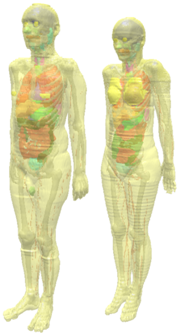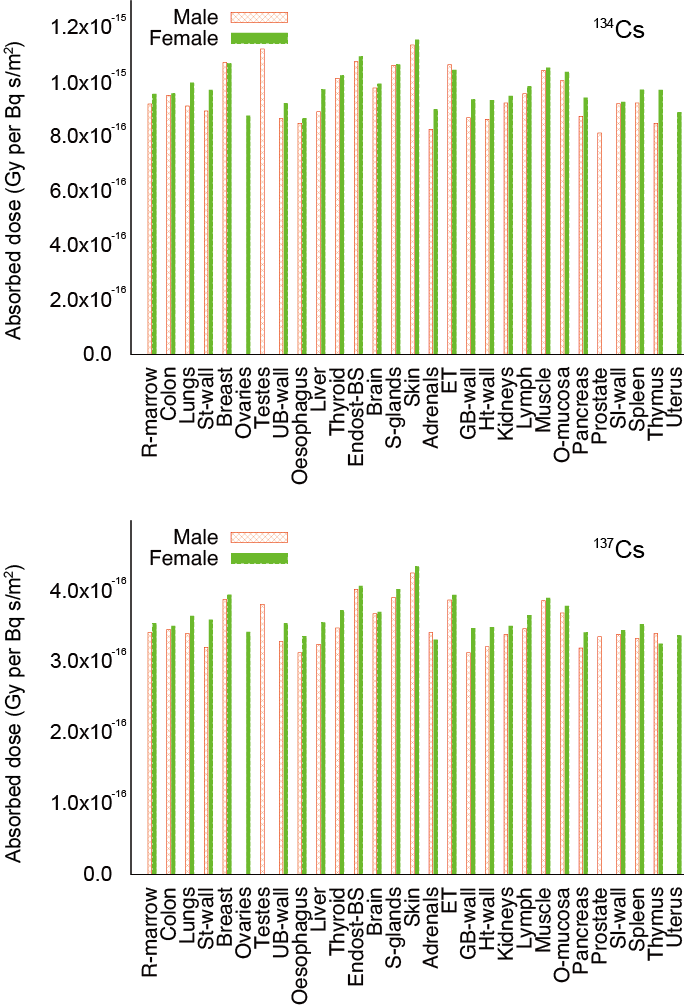Study
Dose assessment study on the basis of the 2007 recommendations of ICRP
Evaluation of dose conversion coefficients for environmental radionuclides
|
Due to the accident at the TEPCO Fukushima Daiichi Nuclear Power Plant,
a large amount of radionuclides had been discharged to the
environment. Then, air, water, and soil are contaminated with
radionuclides in the environment. In order to make a remediation
strategy for the contaminated environment, it is important to assess
the radiation dose from external exposure to radionuclides distributed
in the environment. To meet the demand, we have evaluated the dose conversion coefficients for radionuclides (1252 nuclides) in environment with latest knowledge of radiation protection, and the data were prepared for typical ages from newborn to adult. In this work, the evaluation of the dose conversion coefficients has been performed as follows:
We will release a software to assess the external radiation doses for radionuclides distributed in the environment based on the dose conversion coefficients evaluated in this study. |
 |
|
Fig. 1 The ICRP/ICRU adult reference computational phantoms [1] used
in effective-dose calculations (left: male, right:
female). |
 |
|
Fig. 2 Organ doses of adult male and female for 134Cs
and 137Cs distributed at a depth of 0.5 g/cm2 in
soil [4].
|
| Table 1 Coefficients to convert from the activity concentration of 134Cs and 137Cs in soil to effective dose rate of adults (mSv/h per kBq/m2) [4]. |
 |
|
References [1] ICRP Publication 110 (2009). [2] ICRP Publication 103., Ann. ICRP 37 (2-4) (2007). [3] Ann. ICRP 38 (3) (2008). [4] D. Satoh et al., J. Nucl. Sci. Technol., 1021286 (2015). |
Copyright© Japan Atomic Energy Agency, Research Group for Radiation Transport Analysis